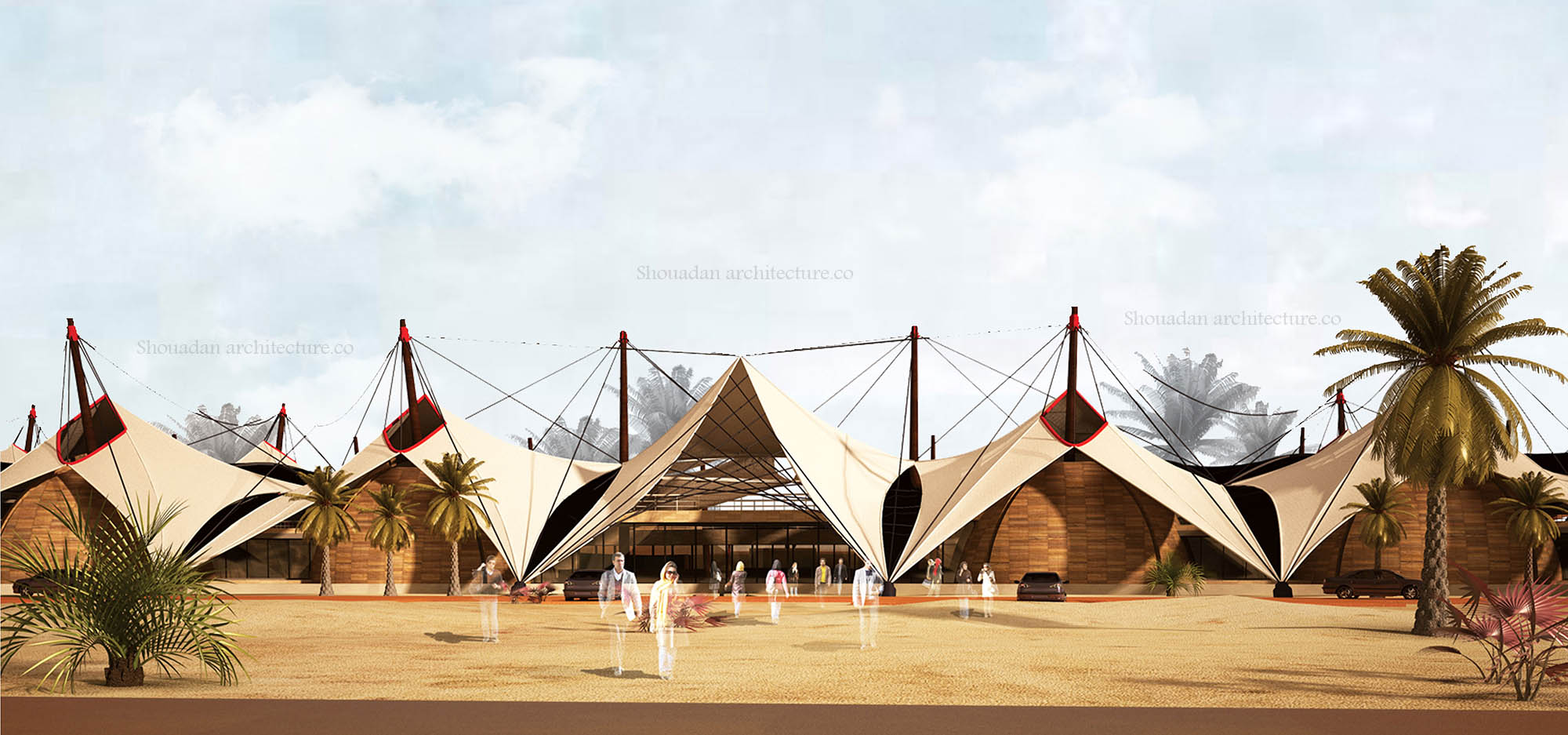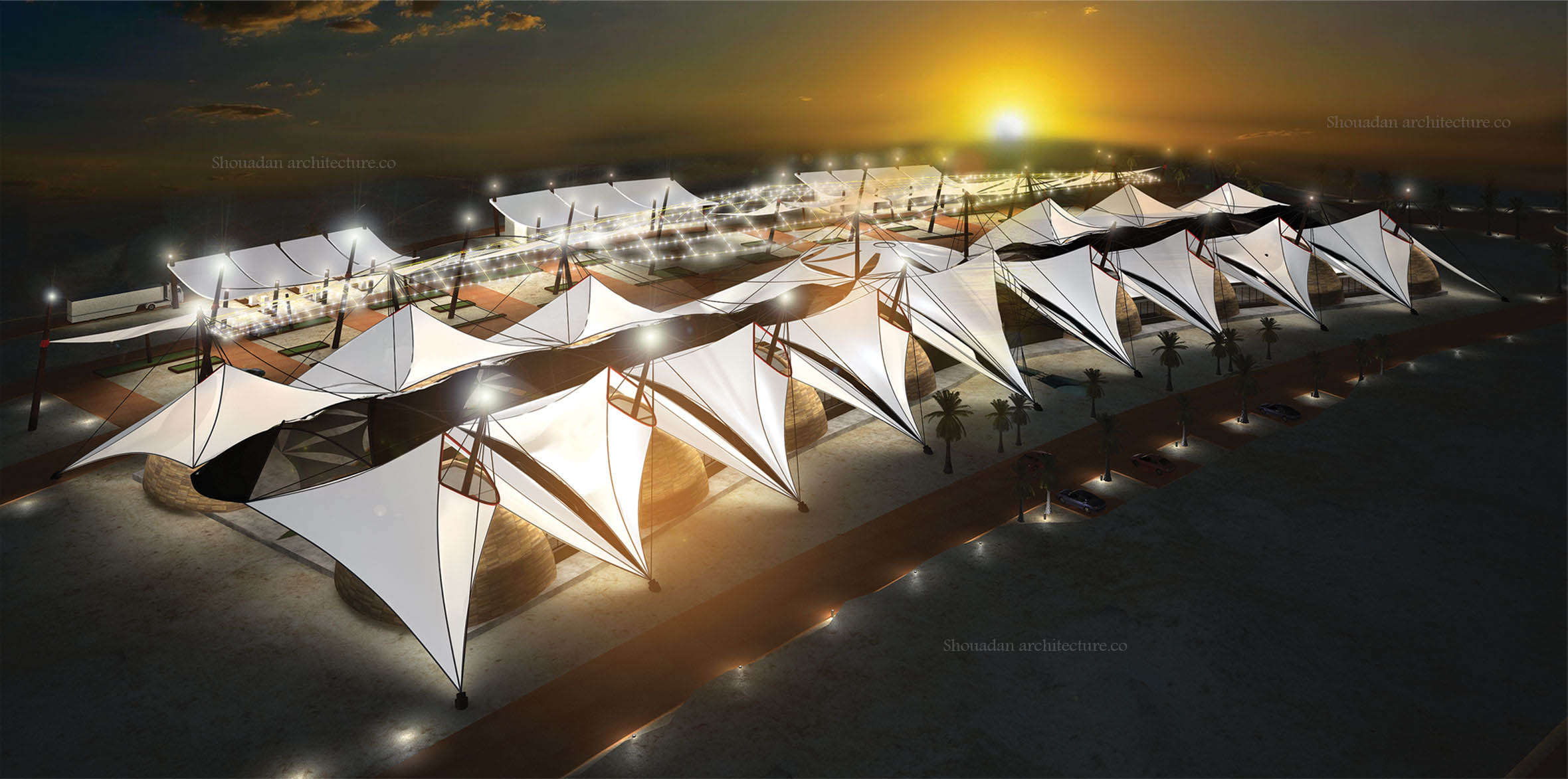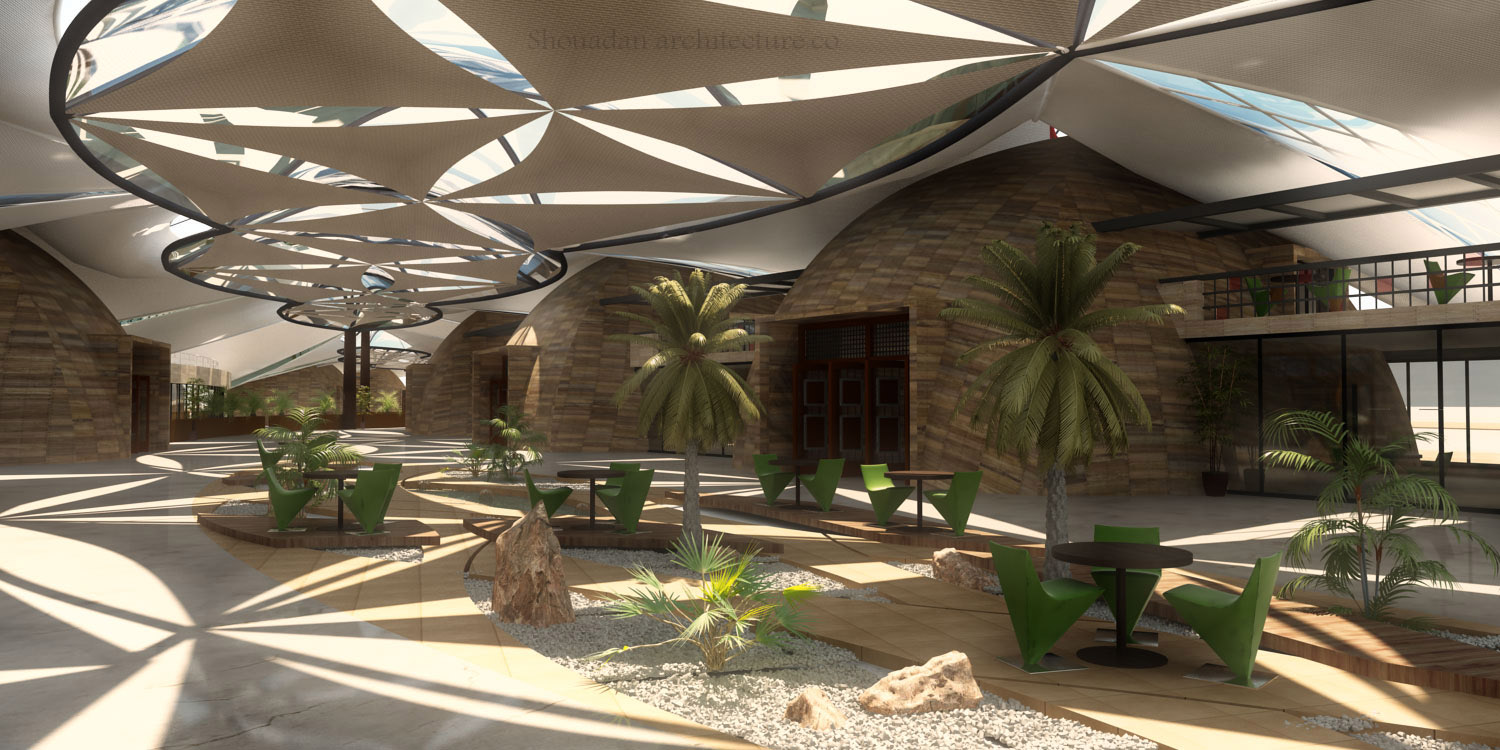Haft Aseman Mehr Service and Welfare Center Architectural Design Competition
Construction Site: Qom-Esfahan Road
Area: 6000 Square Meters
Employer: Haft Aseman Mehr Service and Welfare Company
With the aim to erect an in-the-road resort while keeping the environmental quality for the travelers in the desert region, this service and welfare complex has been put into competition. It has been designed to provide the tourists and travelers with restaurant, coffee shop, mall, parking area, gas station and etc. in a manner that all of their needs have been predicted and the relevant procurement have been made. Getting to know and taking into consideration the addresses along with a specific attention to architectural symbols of desert areas refreshes remembrance of certain customers of desert environment and architecture. Dominant architecture has been inspired from the heart of the land and resembles shader of a tent that keeps the residents safe from the sunlight and reminds of a passenger who seeks a shadow while travelling.The welfare service complex encompasses two parts that are connected by a joint including entrance, reception and services. There are traditional and fast food restaurants in the central part together with public areas and mall in two sides around the building. Furthermore, while paying attention to the interior spaces and building volume, the surrounding open area has also been brought into consideration as promenade and the wilderness and expand view of the surrounding plain have been perfectly utilized. A glimpse at our native and traditional architecture at various historical eras is also an indication of the fact that the roads and buildings have always been considered by Iranian architectural engineers and erection of road caravansaries, inns and reservoirs as well as guiding lighthouses and minarets bears out such claim. It has been strived in designing of this complex to create a remarkable edifice from aesthetical and architectural point of view that while being made with native and regional materials, with due regard to the regional culture, customs and traditions as well as avoiding inefficiencies, meets all the needs of those using these facilities.


